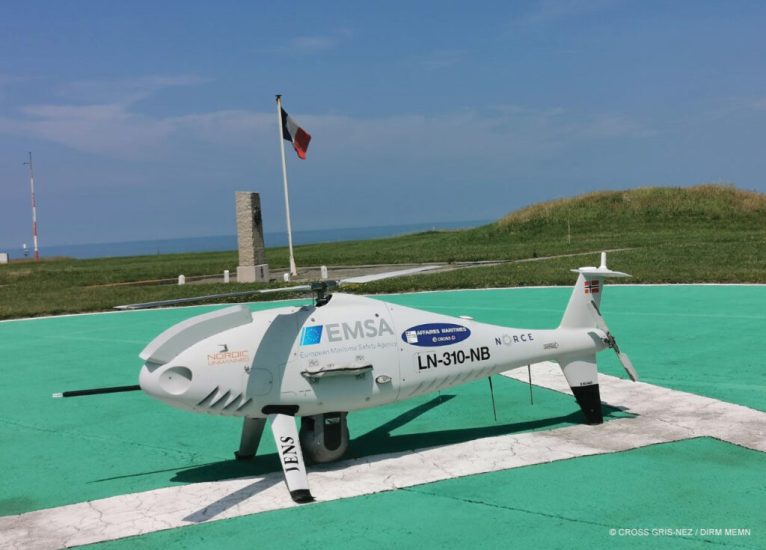Nordic Unmanned is under contract to assist the European Maritime Safety Agency (EMSA) and the french General Directorate for Maritime Affairs, Fishery and Aquaculture (DGAMPA) in conducting a large-scale emissions monitoring campaign using remotely piloted aircraft. Since April, the CAMPCOPTER S-100 has measured the sulphur content in ships’ exhaust plumes in the Channel and the North Sea to detect violations of the applicable limits.
The remotely piloted aircraft (RPAS) takes off from the CROSS Griz-Nez site on the French north coast and flies over selected ships operating in the Channel and the North Sea to measure the sulphur content of their exhaust plumes using specific sensors. The strait is one of the busiest seaways in the world and over 400 commercial vessels use the passageway every day.
This operation is one of multiple simultaneous European deployments for Nordic Unmanned this summer. The Nordic Unmanned crew deliver daily operations with live communication being provided through EMSA’s RPAS Data Centre which allows end-users to follow the RPAS operations live and remotely.
The air emission results are made available in real-time to responsible authorities in all European ports via THETIS-EU, the Port State Control information system operated by EMSA. The consortium led by Nordic Unmanned, and partner NORCE Research Institute AS, ensures that vessels comply with the IMO 2020 sulphur and NOx regulations. The RPAS detects if the exhaust of the monitored vessels exceeds the limitation according to the regulations in place through IMO 2020. Should vessels utilize fuel with a sulphur concentration greater than 0.10%, they will likely receive an inspection at the next port of call.
The RPAS will also be used to provide French authorities with support to their search and rescue (SAR) activities in the area, by enhancing the maritime domain awareness picture.
For more information visit:




